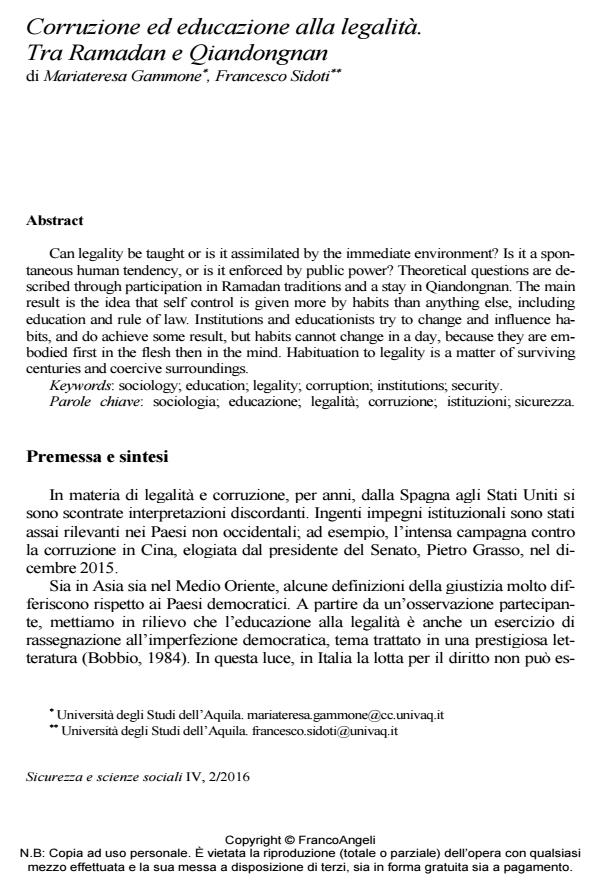Corruzione ed educazione alla legalità. Tra Ramadan e Qiandongnan
Journal title SICUREZZA E SCIENZE SOCIALI
Author/s Mariateresa Gammone, Francesco Sidoti
Publishing Year 2016 Issue 2016/2
Language Italian Pages 16 P. 63-78 File size 589 KB
DOI 10.3280/SISS2016-002005
DOI is like a bar code for intellectual property: to have more infomation
click here
Below, you can see the article first page
If you want to buy this article in PDF format, you can do it, following the instructions to buy download credits

FrancoAngeli is member of Publishers International Linking Association, Inc (PILA), a not-for-profit association which run the CrossRef service enabling links to and from online scholarly content.
Can legality be taught or is it assimilated by the immediate environment? Is it a spontaneous human tendency, or is it enforced by public power? Theoretical questions are described through participation in Ramadan traditions and a stay in Qiandongnan. The main result is the idea that self control is given more by habits than anything else, including education and rule of law. Institutions and educationists try to change and influence habits, and do achieve some result, but habits cannot change in a day, because they are embodied first in the flesh then in the mind. Habituation to legality is a matter of surviving centuries and coercive surroundings.
Keywords: Sociology; education; legality; corruption; institutions; security.
Mariateresa Gammone, Francesco Sidoti, Corruzione ed educazione alla legalità. Tra Ramadan e Qiandongnan in "SICUREZZA E SCIENZE SOCIALI" 2/2016, pp 63-78, DOI: 10.3280/SISS2016-002005